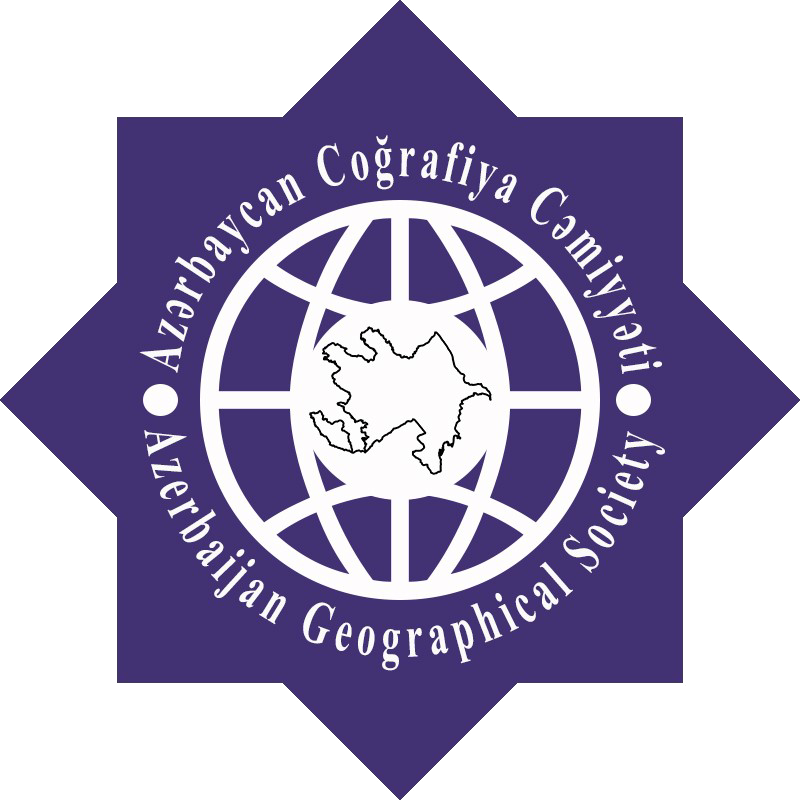MƏHSULDAR QATDA (SURAXANI LAY DƏSTƏSİ) GİL MİNERALLARI VƏ ONLARIN PALEOİQLİMDƏ ƏHƏMİYYƏTİ
Y.N.Tagiyeva, Z.N.Cavadzadə, E.Ə.Abdullayev
Xülasə. Gil mineralları paleoiqlimin əhəmiyyətli göstəricisi kimi çıxış edə bilər. Yalnız heç bir diagenetik dəyişikliyə məruz qalmayan gətirilmə gil minerallarının iqlim tərəfindən nəzarət olunan paleoaşınmanın bərpasında istifadə edilməsi mümkündür. Nəticələr göstərir ki, Suraxanı lay dəstəsinin süxurları (məhsuldar qatın üst şöbəsi) yüksək miqdarda illitlə xarakterizə olunur. Bu göstərir ki, mənbədə, yəni Rus platformasında paleoiqlim arid olmuşdur. Amma 1-2.1 m dərinlik intervalındakı yüksək miqdarda smektit göstərir ki, bu dövrdə Rus platformasında iqlim nisbətən humid olmuşdur.
Ədəbiyyat
- Ağayev, A.A., Çökmə proceslərin geokimyası. Adil oğlu, Baku. 136 s.
- Алиева Э.Г., Алиев Ч.C., Гусейнов Д.А., Бабаев Ш.А., Мамедов Р. M. 2008. Условия седиментации отложений нижнего отдела продуктивной толщи и их естественная радиоактивность. Стратиграфия и седиментология нефтегазоносных бассейнов, № 2, с. 91-110.
- Abdullayev, E and Leroy, S. A.G. 2016. Leroy Provenance of clay minerals in the sediments from the Pliocene Productive Series, western South Caspian Basin. Marine and Petroleum Geology 73, 2016, p. 517-527.
- Biscaye, P.E., Distinction between kaolinite and chlorite in recent sediments by X-ray diffraction. American Mineralogist 49, 1964, 1281–1289.
- Biscaye, P.E., 1965. Mineralogy and sedimentation of recent deep sea clay in the Atlantic Ocean and adjacent seas and oceans. Geological Society of America, Bulletin, 76, 803–832.
- Chamley, H., 1989. Clay sedimentology. Springer-Verlag, Berlin, Heidelberg, New York, 623 p.
- Esquevin, J., 1969. Influence of chemical composition of the clay on the crystallinity. Bulletin des Centres de Recherches de Pau-Societe Nationale des Petroles d’ Aquitaine 3, p. 147-154.
- Fagel, N., 2007 Clay minerals, deep circulation and climate. Development in Marine Geology 1, p. 139-176.
- Forte, A.M., Cowgill, E., 2013. Late Cenozoic baselevel variations of the Caspian Sea: A review of its history and proposed driving mechanisms. Palaeogeography, Palaeoclimatology, Palaeoecology 386, p. 392-407.
- Franke, D., Ehrmann, W., 2010. Neogene clay mineral assemblages in the AND-2A drill core (Mc Murdo Sound, Antarctica) and their implications for environmental change. Palaeogeography, Palaeoclimatology, Palaeoecology 286, p. 55-65.
- Gradusov, B.P., 1974. A tentative study of clay mineral distribution in soils of the world. Geoderma 12, p. 49-55.
- Hinds, D.J., Aliyeva, E., Allen, M.B., Davies, C.E., Kroonenberg, S.B., Simmons, M.D., Vincent, S.J., 2004. Sedimentation in a discharge dominated fluvial-lacustrine system: the Neogene Productive Series of the South Caspian Basin, Azerbaijan. Marine and Petroleum Geology 21, p. 613–638.
- Meyers, P.A., Lallier-Verges, E., 1999. Lacustrine sedimentary organic matter records of Late Quaternary paleoclimates. Journal of Paleolimnology 21, p. 345–372.
- Pettijohn, F.J., Potter, P.E., Siever, R., 1987. Sand and sandstone. Springer, Berlin. 552 p.
- Singer, A., 1984. The paleoclimatic interpretation of clay minerals in sediment a review. Earth-Science Reviews 21, p. 251-293.
- Singer, A., 1980. The paleoclimatic interpretation of clay minerals in soils and weathering profiles. Earth-Science Reviews 15, p. 303-326.
- Thiry, M., 2000. Palaeoclimatic interpretation of clay minerals in marine deposits: an outlook from the continental origin. Earth-Science Reviews. 49, p. 201-221.
- Tyson, R.V., Sedimentary organic matter. Chapman and Hall, Oxford, 1995, 615 p.
- Vincent, S.J., Davies, C.E., Richards, K., Aliyeva, E., 2010. Contrasting Pliocene fluvial depositional systems within the rapidly subsiding South Caspian Basin; a case study of the Palaeo-Volga and Palaeo-Kura river systems in the Surakhany Suite, Upper Productive Series, onshore Azerbaijan. Marine and Petroleum Geology 27, p. 2079-2106.
- Wang, X., Zhang, Y., Chen, R., 2010. Distribution and partitioning of polycyclic aromatic hydrocarbons (PAHs) in different size fractions in sediment from Boston Harbor, United States. Marine Pollution Bulletin 42, p. 1113-1149.
- Weaver, C.E., 1989. Clays, Muds, and Shales. Elsevier, Amsterdam, 818 p.
